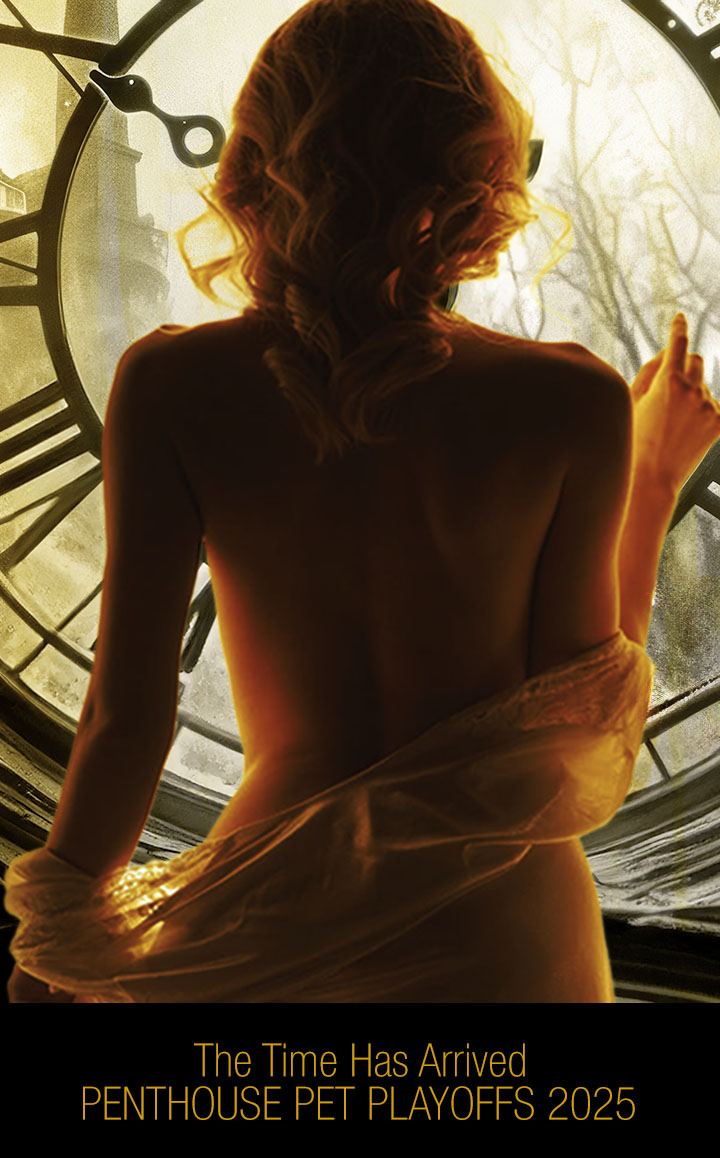It was a beautiful vision …
Even if no one could quite figure out the details: a vast array of technology from the cutting edge of science, massive enough to reach past the border of Earth’s atmosphere and into space, conscripted by the U.S. military to safeguard America and the rest of the free world against the threat of Soviet nuclear attack using X-ray lasers.
Or particle beams.
Or space-based hyperkinetic weapons. Or something like that.
The technology may not have necessarily existed outside anyone’s head, but the Strategic Defense Initiative’s historical importance couldn’t be denied — at least to the people who came up with it. President Ronald Reagan expected that protecting the West against the Soviet nuclear threat through a decisive display of technological strength would be his greatest accomplishment.
“My fellow Americans,” he said in a 1983 televised speech announcing the program, “tonight we’re launching an effort which holds the promise of changing the course of human history.”
The Strategic Defense Initiative (SDI) seemed like something from the mind of a science fiction writer, which partly accounted for its nickname: Star Wars. And to a surprising extent, it actually was.
The program was the brainchild of the Citizens Advisory Council on National Space Policy, which reported to the National Security Advisor throughout the Reagan Administration. It included on its roster not only astronauts, computer scientists, and aerospace engineers, but a large contingent of science fiction authors, including Larry Niven and council chair Jerry Pournelle, coauthors of the popular 1977 novel Lucifer’s Hammer. They were joined by Robert Heinlein, who at the time was the most influential writer in the genre.
The sci-fi guys were clearly in charge. It may seem insane that a handful of science fiction geeks came as close as the Citizens Advisory Council did to tilting the balance of nuclear geopolitics. But since the Industrial Revolution, global leaders and civilians alike have relied on speculative fiction to help them navigate a rapidly changing world.
Avowed socialist H. G. Wells, author of The Time Machine and The War of the Worlds, advised both Franklin Roosevelt and Joseph Stalin, and helped draft the Universal Declaration of Human Rights, the historic document adopted by the UN General Assembly in 1948. Arthur C. Clarke and Isaac Asimov testified before governments on the threat of nuclear warfare.
But a lot of that sci-fi influence — like the idea for SDI — has come from the political right.
During the peak of the Cold War, while many of his contemporaries were crafting classic stories about the folly of nuclear confrontation, Heinlein started an advocacy group to lobby for a more robust American nuclear arsenal. More recently, Steve Bannon, a key architect of President Trump’s immigration policies and travel bans, has repeatedly compared the current global immigration situation to the staggeringly racist sci-fi novel The Camp of Saints, by French writer Jean Raspail, where a telepathic mutant leads an invading army of dark-skinned sex fiends on a mission to topple Western civilization.
To a casual sci-fi consumer in 2018, it might seem like science fiction naturally breaks to the left. Women of the anti-Trump “Resistance” movement cosplay as characters from Margaret Atwood’s 1985 novel The Handmaid’s Tale (or, more accurately, its prestige-y Hulu adaptation). Marvel’s sci-fi-heavy Black Panther movie has become the unlikely focal point for a resurgent Black Pride movement. And when progressive sci-fi visionary Ursula K. Le Guin died in January, it provoked a level of public outpouring of grief usually reserved for movie stars.
But despite how it may seem on TV, the future doesn’t belong to the right or the left. It’s entirely possible that human civilization will evolve into something more like Star Trek’s United Federation of Planets, a spacefaring society where liberal values like pacifism and tolerance are encoded in its most fundamental building blocks.
Libertarianism lined up with some of Sci-Fi’s fundamental tenets: zealous faith in the power of rational thought, quasi-mystical beliefs about the rights of man, and a weakness for romantic ideals about the superiority of the individual.
But there’s no real reason why we couldn’t just as easily turn into the brutal Terran Empire, the warlike, goateed doppelgängers of the Enterprise crew from the Original Series episode “Mirror, Mirror.” And there are a lot of well-respected sci-fi authors who’d argue that that’s the better path.
Science fiction built its name on envisioning new worlds, but since the time it emerged as a distinct genre, writers have used it to argue against disrupting the social order in the world we inhabit. While early pioneers like Frankenstein author Mary Shelley and H. G. Wells were steeped in British socialism, the American pulp magazines that gave the genre its foothold in pop culture reflected a considerably more conservative worldview.
The early pulps were notably blatant in their racism, sexism, and militarism even by the standards of the waning days of the Colonial era. On luridly illustrated covers and in stories by the likes of E. E. “Doc” Smith, swashbuckling Aryan heroes defend the cosmos — and comely white women — from armies of savage, unknowable racial caricatures thinly disguised as extraterrestrials. Meanwhile, in the pages of Weird Tales, H. P. Lovecraft used his Cthulhu mythos to dramatize the central conservative tenet that human civilization is precarious, forever on the verge of absolute chaos.
When John W. Campbell, author of the novella Who Goes There? (adapted by John Carpenter for his 1982 horror classic The Thing), took over as editor of Astounding Science Fiction in 1937, he turned pulp’s reactionary political aesthetic into something like a coherent philosophy, using a heavy hand when necessary.
But Campbell also did more than perhaps any other person to lift science fiction past its pulpy roots and set it on the path toward “serious” literature. The most luminous talents of Sci-Fi’s golden era worked under him. He gave Heinlein and Arthur C. Clarke their breaks. Astounding (later renamed Analog) was the first place to publish zeitgeist-tilting bestsellers like Isaac Asimov’s Foundation, Frank Herbert’s Dune, and L. Ron Hubbard’s Dianetics. Anything big and important that happened in the genre over a course of half a century had his fingerprints all over it. Asimov, probably the most revered figure in postwar sci-fi, called Campbell “the Father of Science Fiction.”
Campbell provided the space and the structure for Sci-Fi’s right wing to cohere. His acolytes, like Heinlein, Niven, and Pournelle, would use it as a launch pad to spread his philosophies far outside geek circles once it collided fatefully with a new school of political thought that was almost as visionary as sci-fi itself: libertarianism.
Sci-Fi’s emergence from the pulp mags in the late 50s and early 60s coincided closely with the rise of libertarianism on the right. Barry Goldwater’s disastrous 1964 presidential campaign turned out to be a flashpoint for modern libertarianism, blowing open a schism between moderates in the Republican party and the rising conservative wing that would be firmly in control of the party by the Reagan era.
Libertarianism mixed Rockefeller Republicans’ intellectualism with appeals to conservatism’s more intangible elements, like the perpetual fear of societal collapse. The combination was a smash hit on the right, and after Goldwater’s run it spread from Washington think tanks to the paranoid outer fringes of the rabidly anti-collectivist John Birch Society.
It also found fertile ground in the science fiction world. Libertarian values lined up neatly with some of Sci-Fi’s most fundamental tenets: zealous faith in the power of rational thought mixed with quasi-mystical beliefs about the rights of man (“man” being the operative word, as it was a mostly male scene), along with a weakness for romantic ideals about the superiority of the individual over systems (and backing up those ideals with force at the drop of a hat).
As author and critic Norman Spinrad pointed out in the late 70s, the genre’s formal structure makes it a perfect vehicle for a certain strain of right-wing thought. Its reliance on Joseph Campbell’s archetypal “Hero’s Journey” encourages readers to identify with an endless supply of monomythic Chosen Ones rebelling against oppressive rulers. And it’s all but impossible to name a single science fiction novel, from anywhere on the political spectrum, where the good guys don’t use violence to solve a problem.
Sci-fi turned out to be fertile ground for libertarian thought. And libertarians were remarkably welcoming to whatever sci-fi had to contribute. After all, libertarians shared Sci-Fi’s love of thought experiments and doomsday scenarios, and the movement’s bible, Ayn Rand’s Atlas Shrugged, was full of pulpy imaginary tech like cloaking devices and a sonic death ray named “Project X.”
Heinlein sealed the relationship with his novel The Moon Is a Harsh Mistress. Published in 1966 — as the budding counterculture was getting its mind blown by Heinlein’s 1961 novel Stranger In a Strange Land and libertarians were staging a revolution in the Republican party — it used an uprising on a moon colony against a corrupt Earthbound bureaucracy to put forth Heinlein’s philosophy of “rational anarchism.” Which sounded a lot like libertarianism. As one character explains, “A rational anarchist believes that concepts such as ‘state’ and ‘society’ and ‘government’ have no existence save as physically exemplified in the acts of self-responsible individuals.” Elsewhere the same character refers to “the most basic human right, the right to bargain in a free marketplace.”
The Moon Is a Harsh Mistress was a hit, and won Heinlein his fourth Hugo Award for best novel, beating out radical progressive Samuel R. Delany’s heady classic Babel-17.
Heinlein brought so many new converts to libertarianism that it reshaped the entire movement. A survey by the libertarian Society for Individual Liberty found that “one libertarian activist in six had been led to libertarianism by reading the novels and short stories of Robert A. Heinlein,” as an article by the Mises Institute summarized it. Libertarian Party founder Dave Nolan and anarcho-capitalist thinker David Friedman — son of libertarian hero Milton Friedman — have both called Heinlein’s novel a key influence. So have dozens of other leading figures in the movement.
When libertarian-influenced Republicans found power during the Reagan years, they brought their love of sci-fi to Washington along with their love of limited federal power.
Few combined the two as passionately as Newt Gingrich, an outspoken sci-fi fan who devoted his long career in government to advocating for conservative principles while harboring a faith in wild, theoretical technology on par with any science fiction writer. He talked about technological weapons programs with a borderline messianic fervor, and once predicted that SDI would destroy not only Soviet communism but be “a dagger at the heart of the liberal welfare state” and create a libertarian paradise bounded only by “the limits of a free people’s ingenuity, daring, and courage.”
Gingrich developed close relationships with several members of the Citizens Advisory Council on National Space Policy, and helped them make connections elsewhere on the right.
Council member Jim Baen commissioned Gingrich’s first book, Window of Opportunity: A Blueprint for the Future, which he and his then-wife Marianne cowrote with sci-fi authors David Drake and Janet Morris. Jerry Pournelle contributed the preface. Gingrich helped Pournelle’s son get a job with California congressman Dana Rohrabacher, a member of the Space and Aeronautics Subcommittee, whose libertarian-leaning views include what his website describes as the “profitable utilization of space.”
When Pournelle adapted the Council’s presidential report to create the book Mutual Assured Survival, it came with a cover blurb from President Reagan himself.
While Heinlein and the other sci-fi libertarians on the Citizens Advisory Council were trying to change the system from its upper echelons, their philosophical descendants were coming up with new ways to subvert it completely.
During the 1970s, science fiction fandom exploded and an entire sci-fi subculture began to come together across a loosely affiliated network of conventions and fanzines. When it absorbed the emerging communities gathering around comic books and computers, it helped form the beginnings of what we’d come to know as geek culture. And while legions of fans flocked to the trippy, counterculture-infused work of Le Guin, Delany, and Philip K. Dick, Heinlein’s libertarian revolution continued to percolate.
A lot of that action was happening around what’s known as hard sci-fi– “hard” because of its exacting attention to scientific detail, its space-operatic militarism, and its contempt for the squishy abstract sentimentality of humanist sci-fi. To the average reader, hard sci-fi can be impenetrable and emotionally flat, but it attracts passionate fans who appreciate its scientific soundness and narrative problem-solving, and don’t mind that the characters don’t have much in the way of interior lives.
Unsurprisingly, a lot of hard sci-fi fans are also into computers. Libertarian ideals — if not the reactionary libertarian politics practiced by Reagan Republicans and John Birchers — flourished in the intellectual hothouse of Silicon Valley. As the vision of personal computers connecting the world into a single digital network moved out of science fiction and into the real world, the people building it saw the next step in human society, a theoretical frontier whose rules they could define before governments could have a say in things.
The most influential ethos to grow out of that thinking was called cyberlibertarianism, which essentially boils down to the idea that the internet should be kept as free from top-down control as possible, whether it’s coming from private corporations or the state. The name “cyberlibertarianism” is somewhat misleading, however. The philosophy shares a lot of core ideas with traditional libertarianism, but its practitioners are as likely to come to them from the left as from the right.
With its ragtag band of scruffy outsiders defending cyberspace against the encroachment of shadowy forces, cyberlibertarianism seemed like something out of a sci-fi novel. And to a major extent, it was.
“We wanted flying cars,” PayPal cofounder Peter Thiel wrote in a manifesto published on an investment group website. “Instead we got 140 characters.”
Like a lot of people at the forefront of the early internet, cyberlibertarianists looked to cyberpunk authors like William Gibson and Neal Stephenson not only for inspiration but for specific ideas about what cyberspace should look and feel like — in this case, a lawless digital frontier where hackers have as much power as governments.
Sympathetic media outlets like Wired, Mondo 2000, and Boing Boing — along with post-Gibson sci-fi authors like Boing Boing coeditor Cory Doctorow — were eager to showcase cyberlibertarianism’s compatibility with progressive goals like shielding activists and distributing information that governments and corporations wanted to be suppressed.
The internet was certainly capable of those and other progressive aims, but the anything-goes anarchism baked into cyberlibertarianism was just as easily adapted to less liberal, more traditionally libertarian ideas. At an academic conference in 1988, Tim C. May, who founded the influential “cypherpunk” mailing list (its name a proud nod to sci-fi), distributed “The Crypto Anarchist Manifesto,” full of dreamy ideas about subverting governments and monetizing literally everything that can have a price tag put on it.
Secure, widely available cryptographic tools would “fundamentally alter the nature of corporations and of government interference in economic transactions,” May predicted. “Combined with emerging information markets,” he continued, “crypto anarchy will create a liquid market for any and all material which can be put into words and pictures.” The last words on a list of key terms and phrases that May attached to the manifesto are “collapse of government.”
As tech has evolved from a fringe industry into one of the most important parts of the global economy and everyday life, its most successful figures have been able to put ideas like May’s into practice on a scale few could have imagined when he first handed out copies of “The Crypto Anarchist Manifesto.” With massive amounts of money and power flowing into the tech world, theories about subverting — or “disrupting” — governments and social norms are being tested out in real life.
The most devoted and powerful libertarian in the tech world is PayPal cofounder and venture capitalist Peter Thiel. Since selling PayPal to eBay in 2002 in one of the biggest tech deals of the era, Thiel has used his fame and fortune to not only speak out against government control of nearly every kind, but to work out ways of effectively taking that control away.
Of all the supervillain-like figures in the upper echelons of technology, Thiel seems to have embraced the role the most. He’s been unabashed about promoting political views far to the right of mainstream Silicon Valley culture — some of his positions conservative enough that they’d stand out even in red state America.
Thiel donated over a million dollars to Donald Trump’s presidential campaign and served on the executive committee of his transition team. He funded the lawsuit over Hulk Hogan’s sex tape that successfully shut down Gawker–whose tech spinoff site Valleywag had been unsparing in its criticism of Thiel–in one of the most blatant attacks on the free press in recent history.
A good deal of Thiel’s libertarian education, and his worldview in general, seems to have come from science fiction. He’s an unabashed sci-fi geek, raised on old-school greats like Heinlein and Asimov. (He’s also a huge Tolkien fan, paying homage to the fantasy author in the names of multiple business ventures.) His career and interests seem powered by a frustration with how the real world stacks up against the future that he felt sci-fi promised him. “We wanted flying cars,” he wrote in a manifesto published on the website of his investment group Founders Fund. “Instead we got 140 characters.”
Like Heinlein, Thiel has been openly critical of the very idea of democratic rule.
“I no longer believe that freedom and democracy are compatible,” he wrote in a famous 2009 essay titled “The Education of a Libertarian.” Elsewhere in the essay, he bemoaned, in retrospect, extending the vote to women, because as a group they’ve historically been less supportive of libertarianism than men.
“While I don’t think any class of people should be disenfranchised,” he wrote, “I have little hope that voting will make things better.” Thiel has been an outspoken supporter of the work of software engineer and anti-democracy thinker Curtis Yarvin, who’s become a cult figure on the far right for essays (written under the pen name Mencius Moldbug) articulating a philosophy known either as “neoreaction” or the fantasy-novel-sounding “Dark Enlightenment.”
Thiel has some big, pulpy ideas about the future that feel like something out of a sixties-era blue-sky libertarian sci-fi novel. One of his biggest and most daring ideas is building a new nation from scratch on floating oceanic platforms where businesses and individuals can do their thing, whatever it is, free of government oversight. Think of it as an Ayn Rand-ian libertarian Garden of Eden in international waters.
The notion is one of Thiel’s most widely ridiculed ideas–and a popular go-to symbol for Silicon Valley extravagance — but it’s actually nearing reality. Last year the Thiel-funded Seasteading Institute — founded by Patri Friedman, son of Heinlein-loving libertarian guru David Friedman — reached an agreement with French Polynesia to build a test platform that could become a habitable experimental city, and the first step to an independent nation founded entirely on libertarian principles.
It’s become a cliché to say that we’re all living in a sci-fi novel these days, but that doesn’t mean it’s not true. In fact, it’s truer than most people realize.
Over the past half century, science fiction visionaries from Robert Heinlein to William Gibson have imagined ways for society to adapt to the sweeping technological change that’s come to define our lives. And now, with the foundations of postwar liberal democracy suddenly seeming a lot less stable than they used to be, people like Peter Thiel and the legions of pseudonymous anarcho-geeks organizing online suddenly have an opportunity to put these ideas into practice.
Soon we might have a chance to find out how these sci-fi visions work in real life. We might not have a choice.




















